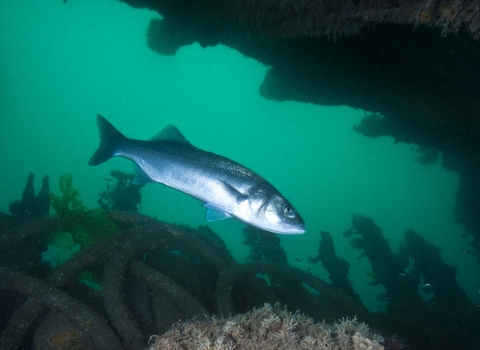
Seabass ©Alex Mustard/2020VISION
European seabass
Seabass is a seafood favourite, appearing on menus throughout the UK. But it's in trouble in UK seas, with much of the seabass we eat imported from European fish farms.
Scientific name
Dicentrarchus labraxWhen to see
January to DecemberSpecies information
Statistics
Length: Up to 100cmConsidered of Least Concern globally on the IUCN Red List of species, but ICES list the regional stock as overexploited and rapidly declining.
